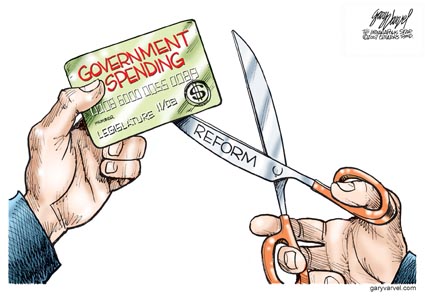After the agreement with the International Monetary Fund (IMF), the Government reduced public spending, but less investment in works hurt economic growth.
The Government will receive $700 million from the IMF in the last week of December 2022.
It means that Ecuador will close, for the second time in its history, complete a credit agreement with the trillion-dollar lending organization.
The first time it succeeded was in 2001, while on 18 other occasions the country failed to comply with the agreements with the Fund.
Twenty-seven months after the start of the current program with the IMF, one of the main results for the Ecuadorian economy is the reduction of high public spending, says former Finance Minister Mauricio Pozo.
There is also a record tax collection, at levels not reached since 2015.
With the adjustments implemented, the budget revenues of public entities will exceed their expenses by 2.3% in 2022 (not counting debt interest expenses). This is known as the primary surplus.
Ecuador ‘s Budget will have the highest surplus in the Americas during 2022, a year in which most of these economies will have fiscal deficits.
What changed?
Two governments, that of Lenín Moreno and that of Guillermo Lasso, oversaw implementing the measures that allowed compliance with the agreement with the IMF to disburse $6.5 billion in credit over 27 months, in six disbursements.
The seven major things that changed because of the loan were:
1. Control of spending
One of Ecuador’s main commitments was to reduce the level of public spending that became unsustainable between 2008 and 2018.
The main spending adjustment variables have been in public works and state investment.
The Moreno government allocated $284 million for public works in 2019. But that spending fell to $221 million in 2021, during the Lasso government.
Spending on public salaries fell slightly in those years: the government plans to allocate $9.214 billion to pay salaries in 2022, 0.8% less than what was allocated in 2019.
María Caridad Ortiz, Research Director of Grupo Faro, says that the program forced Ecuador to bout its budget in order, but the quality of spending still needs to be improved.
2. The burden of subsidies
Even though the Government has tried to reduce spending on subsidies for low-octane gasoline and diesel, pressure from indigenous movements has prevented it.
The Lasso government managed to reduce this expense temporarily, with the implementation of price bands that fluctuated according to the international price of oil.
But the Executive not only had to eliminate the band system, but also had to increase the subsidies, after a national strike, in June 2022.
The IMF mentioned that the targeting of fuel subsidies is a pending measure that will help the public sector to spend less.
3. More social bonds
Between 2020 and 2022, the Moreno and Lasso governments increased spending on social subsidies, represented by bonuses and pensions.
Following the agreement with the IMF, at least 75% of Ecuador’s lower-income population receives some type of social bonus, according to the Ministry of Economic and Social Inclusion.
Government spending on bonds and pensions went from $751 million in 2019 to $1.151 billion as of November 2022.
4. Taxes for those who earn more
The tax reform that came into effect in December 2021 was one of the ways used by the Lasso government to increase revenue in the Budget.
The Government aimed to collect more taxes from people with higher incomes in 2022, through temporary taxes and income tax reforms.
Income from tax collection broke a record between January and November 2022, reaching $14.015 billion.
It is the highest tax value that the Budget has received since 2015.
5. Less debt
The improvement in income and the cut in expenses meant that Ecuador needed to borrow less.
The State has not had to reissue foreign debt bonds, which would have meant paying an annual interest rate of 15%.
The agreement with the IMF also helped Ecuador secure increases in loan quotas from other multilaterals, says Alberto Acosta Burneo, the editor of Análisis Semanal.
The interest rates of the other multilaterals are now lower, which is why the profile of the Ecuadorian debt improved, says Acosta Burneo.
The average interest rate on external debt was 3% per year as of September 2022, compared to 6% in 2019.
According to the IMF, Ecuador will reach its goal of reducing public debt to the equivalent of 40% of GDP faster than expected.
6. Economic growth
The big ‘But…’ arising from these actions is that the reduction in investment spending—without the private sector compensating for this space—has harmed economic growth, says the director of Research at Grupo Faro, María Caridad Ortiz.
A lower injection of resources in public works and investment hurt construction, one of the sectors that generates the most employment.
Ecuador’s Gross Domestic Product (GDP) will grow 2.9% in 2022, below the 3.6% forecast for Latin America, according to the IMF.
Acosta Burneo says that the mining and oil sectors have a high potential to attract more private investment, but environmental opposition is an obstacle.
7. Dollarization protection
With the agreement with the IMF, international reserves have increased, which are the liquid resources kept in the Central Bank to support deposits, for example, from clients in the financial sector and local governments.
International reserves have doubled since 2019. These totaled $7.483 billion in the first week of December 2022.


0 Comments